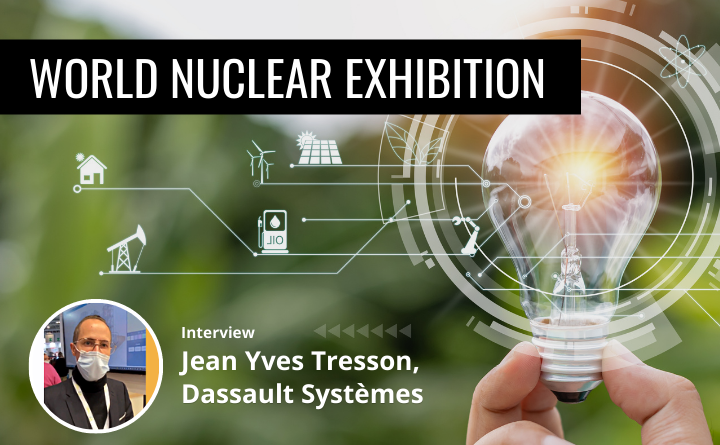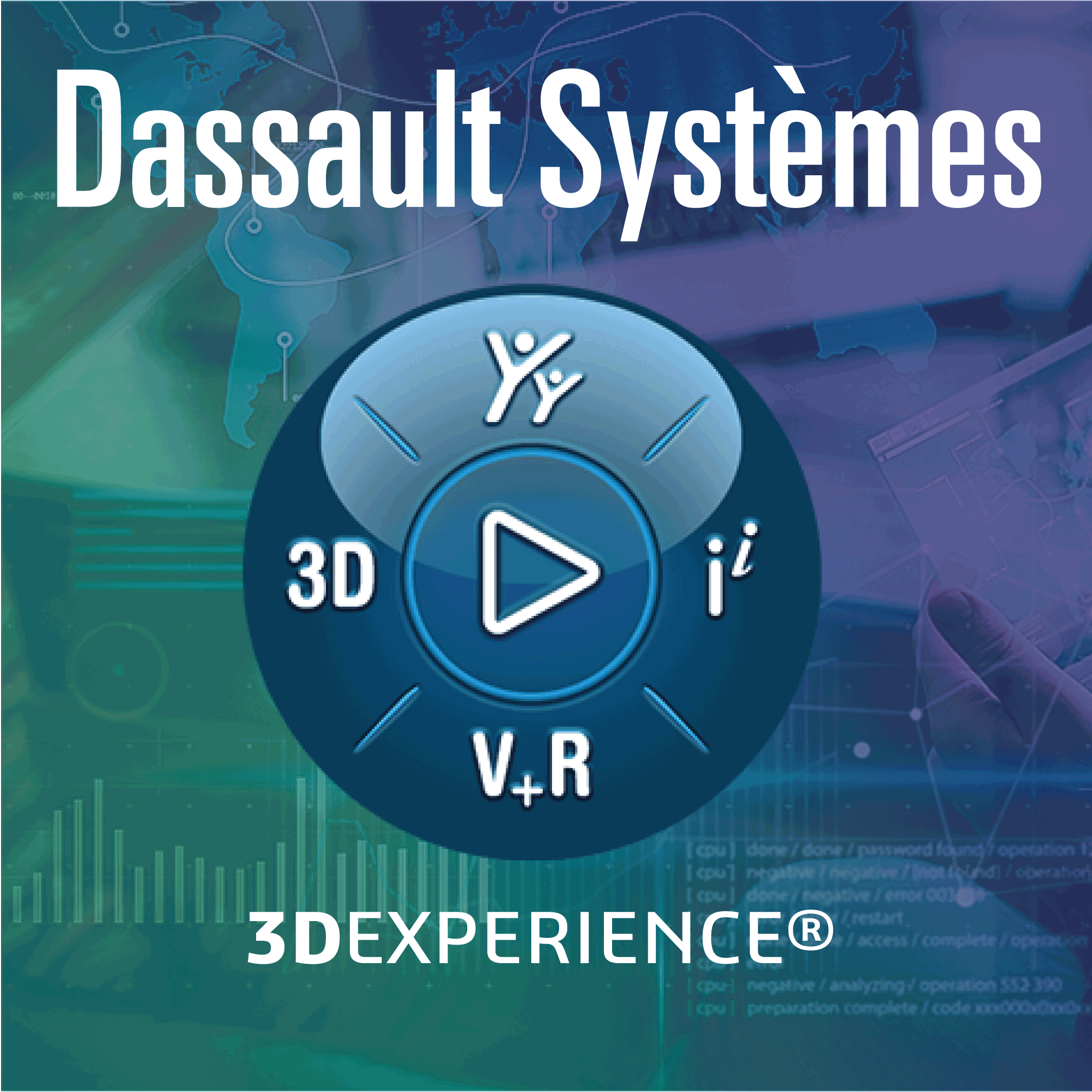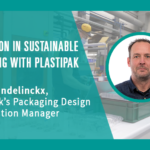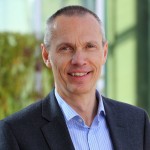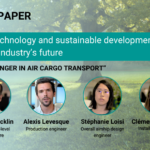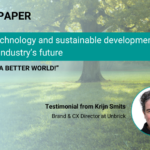On the occasion of the World Nuclear Exhibition (WNE), dedicated to the civil nuclear sector, held in Paris from 30 November to 2 December 2021, KEONYS interviewed Jean Yves Tresson, who has 15 years of experience in nuclear projects at Dassault Systèmes. The 3DEXPERIENCE® collaborative platform from Dassault Systèmes makes it possible to address challenges and seize the opportunities of the nuclear industry as a key partner for a low-carbon society and responsible future.
“I believe that electricity from nuclear energy is one solution, but it must be associated with an energy mix including renewable sources, such as wind power” – Jean Yves Tresson
We all dream of creating a sustainable world. However, as our energy needs continue to grow, the major challenge is finding alternative solutions for combining renewable and nuclear energy to reduce our carbon footprint. The purpose of the WNE was to demonstrate that nuclear energy must play a key role in the energy transition in order to reach the goal of a low-carbon society. To achieve this goal, the entire sector will mobilize a wide range of stakeholders, including engineering and construction companies, equipment manufacturers, and those in charge of operations, to work together with other partners around the world. New digital technology such as the 3DEXPERIENCE® platform make it possible for an entire ecosystem to work together in real-time on a single interface (environment) to accomplish the following:
- Design and select materials based on requirements and performance / cost expectations
- Simulate system reactions to obtain the best possible design
- Optimize the design, reduce iterations and ensure compliance
- Collaborate by optimizing connections between teams and project stakeholders
- Anticipate issues by putting the system into service virtually in operational conditions in order to adapt the strategies
- Carry out operations while efficiently and accurately monitoring the state of the equipment and planning for maintenance operations
“We use the 3DEXPERIENCE® platform to ensure the equipment’s digital continuity, from design to after-sales services or from the engineering phase to the decommissioning of these facilities,” Jean Yves Tresson.
The teams at KEONYS, the first reseller of software company Dassault Systèmes, which has deployed the 3DEXPERIENCE® collaborative platform on premises and in the cloud, wanted to learn more about the current state of affairs and prospects for the development of nuclear energy to fight global warming using digital technology.
Watch the interview with Jean Yves Tresson
Turn on the English subtitles on YouTube to get the translation.
Video transcript
To what extent does nuclear power contribute to energy production in France and Germany?
Jean Yves Tresson: Nuclear energy accounts for between 75 and 80% of France’s energy production. We now have fifty-nine nuclear reactors on nineteen sites, nineteen nuclear power plants. That is the situation in France. It is different in Germany, where they decided to end the use of nuclear fuel. However, the country was forced to recommission coal-fired plants and import electricity from France, which produced from nuclear energy.
What role can nuclear energy play in fighting global warming?
JYT: I believe it is very valuable and important to define an energy mix, as many countries have done, such as China. No single solution exists. Nuclear is not the solution to the problem and neither is wind power, solar power or biogas. What we need is an energy mix. Countries such as China have decided to target nuclear power, wind power, and solar power to form an energy mix aimed at meeting the growing demand for electricity. I therefore believe that electricity from nuclear energy is one solution, but it must be associated with an energy mix including renewable sources, such as wind power.
What does “low-carbon energy” mean?
JYT: Low-carbon energy refers to energy that does not emit any CO2. It is net-zero carbon. This means zero pollution, which is extremely difficult to accomplish. Nuclear energy is low-carbon. There is a waste disposal aspect involved, which can spark debate. However, renewable energy is a different situation. Although innovative projects aimed at recycling wind turbine blades are under way, none of the projects have been industrialized. The blades are therefore burnt, which is not environmentally friendly. So, there is room for debate. There is no single solution. In any case, low-carbon energy means zero CO2 emissions.
How does digital technology support the nuclear industry?
JYT: We help companies transform, become much more competitive and develop innovative projects. Here we can look at the different pods.
We can start with the first step and see how we help our clients pragmatically in terms of digital transformation. Here, using the 3DEXPERIENCE® platform, we start by creating a single data repository that will bring all the data together in one place: the 3DEXPERIENCE® platform. Once we have established and defined this foundation, we can start working on other business processes.
These other business processes could include designing and installing equipment in a nuclear power plant, as seen here. It is of course important to bear in mind that we are working in the context of a project structure. We are still in the single data repository, with an engineering aspect and a governance aspect with project management.
We then move on to the more specific area of piping engineering in which we focus on defining the pipelines using 2D, the diagram, 3D, and the generation of ISO reports. This therefore pertains to specific piping engineering procedures and ends with maintenance operations, which you can see on this screen.
So, as you see, we use the 3DEXPERIENCE® platform to ensure the equipment’s digital continuity, from design to after-sales services or from the engineering phase to the decommissioning of these facilities.
Does digital continuity apply to nuclear industrial processes? If so, what are the benefits?
JYT: Yes, it does, and this ties in with the question about innovation. We talk a great deal about technology today, several types of nuclear technology. We mainly talk about the EPR, the Hualong One, the EPR2, which is new technology, a new French nuclear reactor design, and of course SMRs (small modular reactors).
These are very innovative projects and clients will be able to access the industrial development of these projects thanks to the 3DEXPERIENCE® platform.

